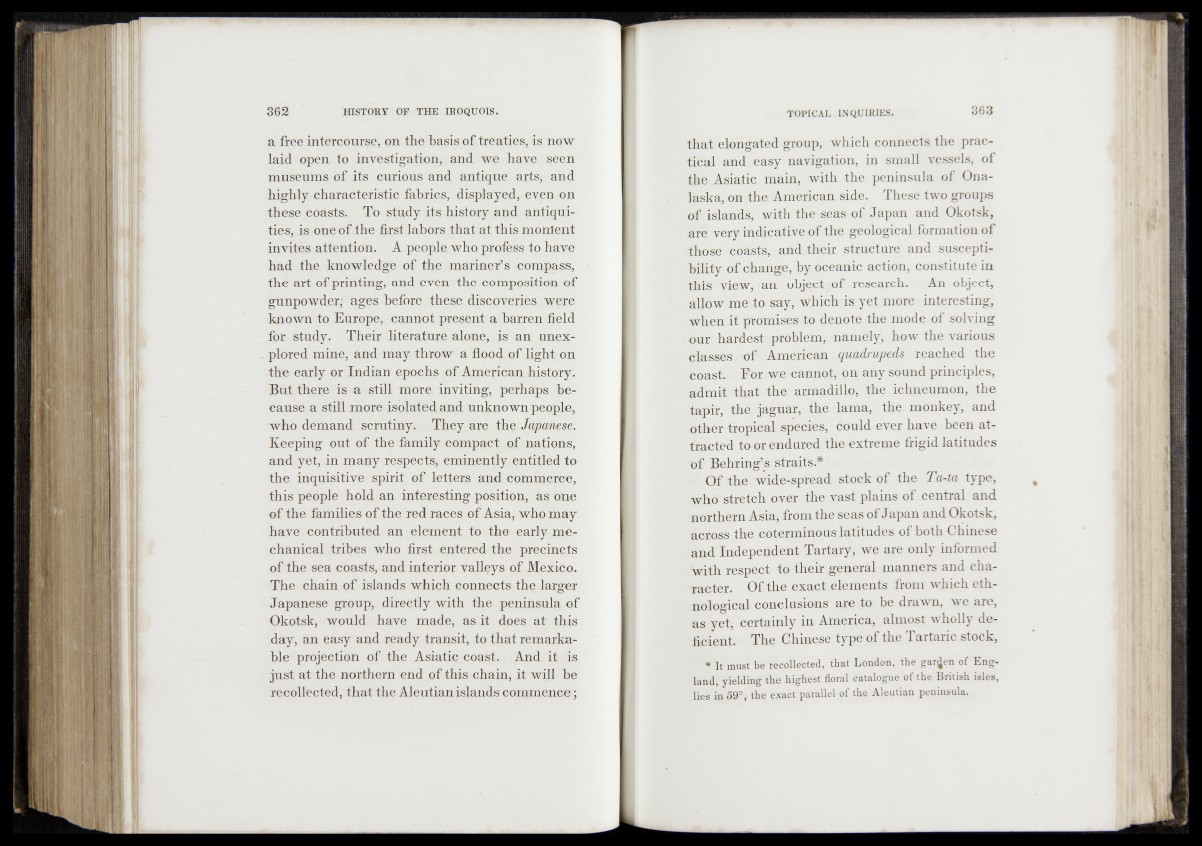
a free intercourse, oar the basis of treaties* is now
laid open to investigation, and we have seen
museums of its curious and antique arts, and
highly characteristic fabrics, displayed, Oyen on
these coasts. To study its history and anliqui-
ties, is oneof the first labors that at this montent
invites attention. A people who profess to have
had the knowledge of the mariner’s .compass,
the art of printing, and even the composition of-
gunpowder; ages before these^discoveries., were
known to Europe, cannot present a barren field
for study. Their literature alone, is an unexplored
mine, and may throw a flood of light on
the early or Indian epochs of American, history.
But there is a still more inviting, perhaps because
a still more isolated and unknown people,
who demand scrutiny'. They are th f Japanese.
Keeping out of the family Compact of nations,
and yet, in many respects, eminently entitled to
the inquisitive spirit of‘letters and commerce,
this people hold an interesting position, as one
of the families of the red races of Asia, who may
have contributed an element to tho early mechanical
tribes who first entered the precincts
of the sea coasts, and interior valleys qf Mexico.
The chain of islands which connects the larger
Japanese group, directly with the peninsula of
Okotsk, would have made, as it does at this
day, an easy and ready transit, to that remarkable
projection of the Asiatic coast. And it is
just at the northern end of this chain, it will be
recollected, that the Aleutian islands commence ;
that elongated group, which connects the practical
and easy navigation, in small vessels, of
the Asiatic main, with the peninsula of Ona-
laska, on the American side. These two groups
of islands, with the seas of Japan and Okotsk,
are very indicative of the geological formation of
those coasts, and their structure and susceptibility;
of change, by oceanic action, constitute in
this view, an object, of research. An object,
allow me to say, which is yet more interesting,
when it promises to denote the mode of solving
Our hardest problem, namely, how the various
classes of American quadrupeds reached the
Coast./ For we cannot, pn any sound principles,
admit that the armadillo, the ichneumon, the
tapir, the jaguar, the lama, the monkey, and
other tropical species, could ever have been attracted
to or endured the extreme frigid latitudes
of Behring’s/straits.^||
O f the wide-spread stock of the Ta-ta type,
who stretch over the vast plains of central and
northern Asia, from the seas of Japan and Okotsk,
across the coterminous latitudes of both Chinese
and Independent Tartary, we are only informed
with respect to. their general manners and character.
Of the exact elements from which ethnological
conclusions are to. be drawn, we are,
as yet; certainly in America, almost wholly deficient.
The Chinese typeof the Tartaric stock,
* It must be recollected, th a t London, the garden of England;
yielding the highest floral catalogue of the British isles,
lies in 59°, the exact parallel of the Aleutian peninsula.